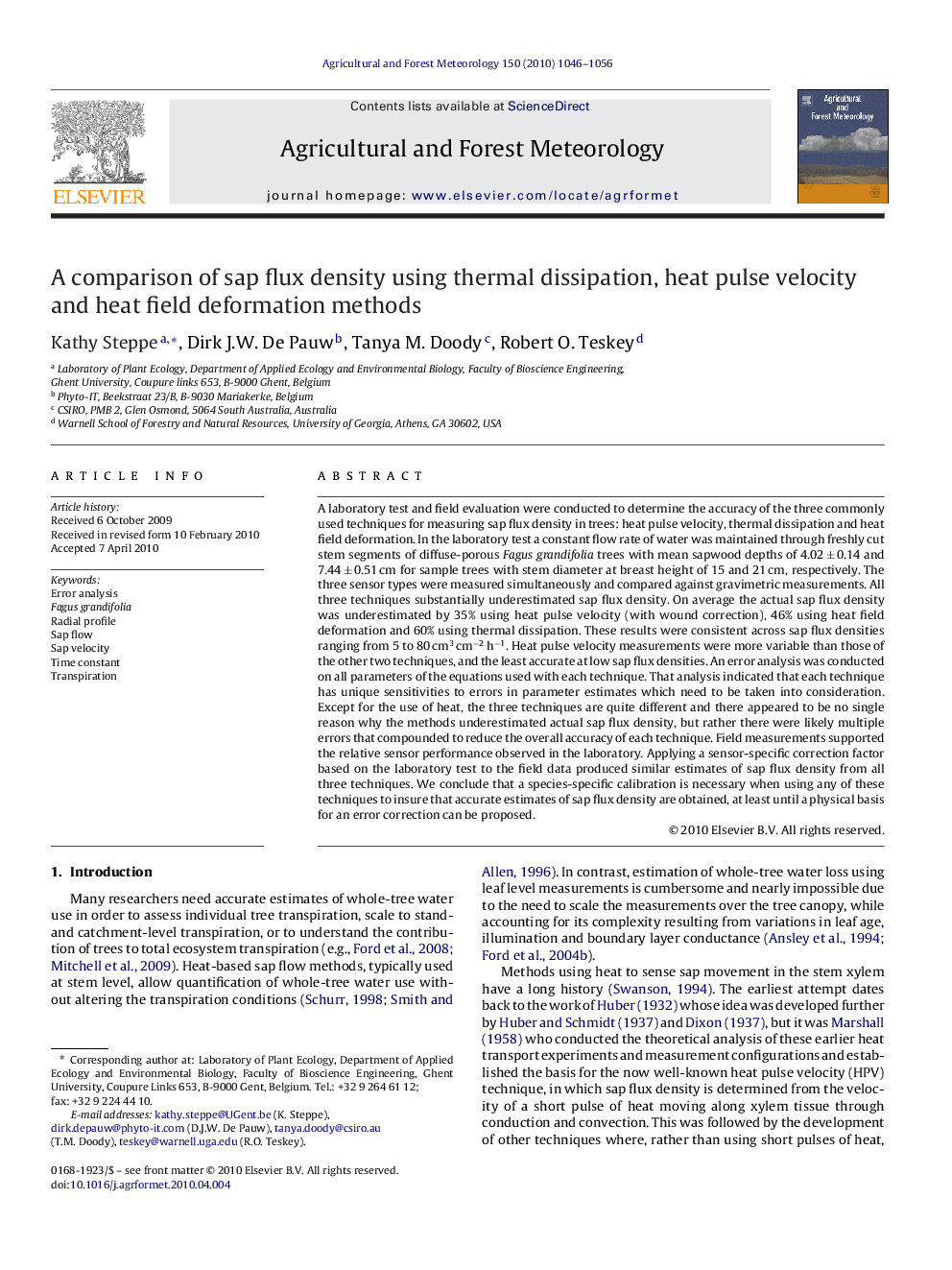| کد مقاله | کد نشریه | سال انتشار | مقاله انگلیسی | نسخه تمام متن |
|---|---|---|---|---|
| 82472 | 158397 | 2010 | 11 صفحه PDF | دانلود رایگان |

A laboratory test and field evaluation were conducted to determine the accuracy of the three commonly used techniques for measuring sap flux density in trees: heat pulse velocity, thermal dissipation and heat field deformation. In the laboratory test a constant flow rate of water was maintained through freshly cut stem segments of diffuse-porous Fagus grandifolia trees with mean sapwood depths of 4.02 ± 0.14 and 7.44 ± 0.51 cm for sample trees with stem diameter at breast height of 15 and 21 cm, respectively. The three sensor types were measured simultaneously and compared against gravimetric measurements. All three techniques substantially underestimated sap flux density. On average the actual sap flux density was underestimated by 35% using heat pulse velocity (with wound correction), 46% using heat field deformation and 60% using thermal dissipation. These results were consistent across sap flux densities ranging from 5 to 80 cm3 cm−2 h−1. Heat pulse velocity measurements were more variable than those of the other two techniques, and the least accurate at low sap flux densities. An error analysis was conducted on all parameters of the equations used with each technique. That analysis indicated that each technique has unique sensitivities to errors in parameter estimates which need to be taken into consideration. Except for the use of heat, the three techniques are quite different and there appeared to be no single reason why the methods underestimated actual sap flux density, but rather there were likely multiple errors that compounded to reduce the overall accuracy of each technique. Field measurements supported the relative sensor performance observed in the laboratory. Applying a sensor-specific correction factor based on the laboratory test to the field data produced similar estimates of sap flux density from all three techniques. We conclude that a species-specific calibration is necessary when using any of these techniques to insure that accurate estimates of sap flux density are obtained, at least until a physical basis for an error correction can be proposed.
Journal: Agricultural and Forest Meteorology - Volume 150, Issues 7–8, 15 July 2010, Pages 1046–1056